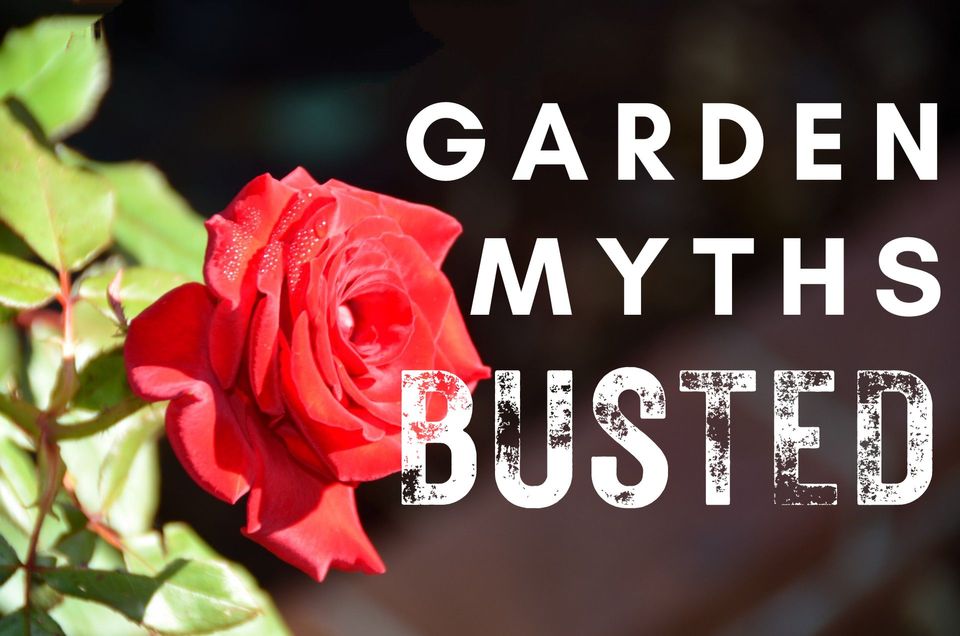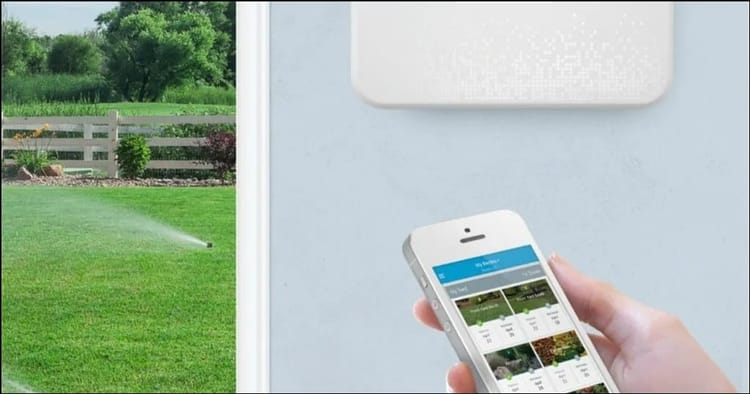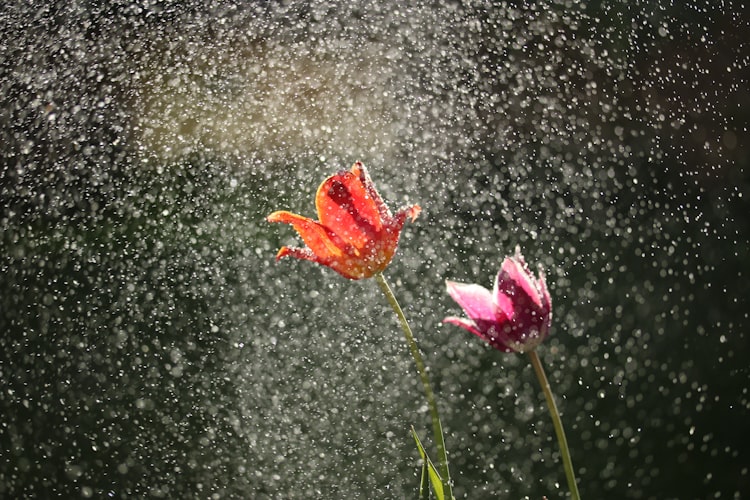Common Gardening Myths

Managing gardens, with their arrays of vibrant colors, refreshing scents, and bountiful harvests, has captivated the hearts of many. Yet, amidst this world of botanical wonders, a labyrinth of myths and misconceptions often entangles both novice and seasoned gardeners alike. From well-intentioned advice passed down through generations to modern-day gardening rumors, it can be challenging to discern the truth from fiction.
So, let's dig deep, challenge assumptions, and separate the wheat from the chaff as we explore some common gardening myths and unveil the truths that lie beneath the surface soil.
Watering on a sunny day burns leaves
This myth is based on the fact that when sun rays pass through glass, they can magnify and burn the surface underneath. While this sounds plausible, if the sun is strong enough to burn like this, the water will evaporate off the leaves before it has any negative impact. For the most part, there is nothing dangerous to the health of plants from watering in the middle of a sunny day. The real issue is that it is not a good use of water. A lot of the water will evaporate away before it can be absorbed by the plant, so it is better to water in the morning or evening on a midsummer day.
Add sand to loosen heavy clay soil
Dense clay soil can be problematic for growing plants. A common myth is that adding sand to the soil will help improve drainage. In reality, this is more detrimental than helpful. Clay particles are significantly smaller than sand particles, although they might appear similarly small to the naked eye. When sand and clay are combined, the minute clay particles infiltrate the gaps between the larger sandy pieces, occupying those spaces which leads to an even more dense soil. A better approach is to amend your soil with organic matter such as compost or a "nursery-mix" soil.
Wood Chip Mulch is a fire hazard
Wood is flammable, but wood chip mulch, when laid on the ground, is actually one of the least flammable types of mulch. A well maintained yard will use wood chip mulch to retain moisture in the ground. This means that the mulch itself is consistently moist, making it less likely to combust. While it can add fuel to wildfire, shrubs and trees are the main fuel for a fire so the garden will burn with or without mulch. Shredded bark mulch and rubber mulch have a higher chance of combustion.
Drought Tolerant plants do not need watering
This myth is caused by the mistakenly applied term "drought resistant" instead of "drought tolerant", or "Zeroscaping" instead of "xeriscaping". Plants do not resist drought, they have adapted to tolerate it, and are often happier when given supplemental water. The term xeriscape is taken from the scientific term for drought-tolerant plants: xerophytes. When mistakenly spelled as zeroscape, it is often due to a mistaken belief that a xeriscaped garden is a zero-water garden. This is not true, the term is just another way of describing a drought-tolerant garden.
Many drought-tolerant plants will look better when given supplemental water, and they all require regular watering during their first year in the ground to get established. In years with below-average rainfall, even a well-established xeriscape garden will require supplemental irrigation to thrive solely on rainwater.
Cuts on trees need to be sealed with paint
This is not necessary, even though it was considered to be a best practice in the past and many pruning paint products are available today. Recent research has shown that pruning paint can actually hinder the healing process and promote the proliferation of rot-causing organisms and insect infestation. Instead of preventing infection, protective coatings on wounds often trap moisture and promote decay. In the majority of cases, it is advisable to allow wounds to naturally seal themselves without intervention. The only instances where this still an acceptable practice are trees that are susceptible to Dutch Elm disease or Oak Wilt and have been cut during the growing season for safety reasons. In these cases, this type of work should be done by a certified arborist that will decide the best approach to treating a fresh cut.
Gravel in containers improves drainage
A common misconception is that containers with no drainage holes can be improved by placing gravel at the bottom of the pot, below the soil. The idea is that the soil will drain water down into the gravel to prevent the soil getting too damp and prevent root rot. In container gardening, adding a layer of gravel at the bottom of a pot does not necessarily improve drainage. In fact, it can potentially hinder drainage and lead to waterlogged conditions for container plants.
Adding a layer of gravel at the bottom of a container can create a perched water table. This means that water accumulates above the gravel layer, which can lead to poor drainage and cause the plant's roots to sit in excessive moisture.
Instead of using gravel as a drainage layer, it is generally recommended to use a well-draining potting mix specifically designed for container gardening. Such mixes are formulated to provide adequate drainage while retaining enough moisture for plant roots. If the container does not have any drainage holes, then these should be drilled into the base for proper drainage.
Small trees need to be staked
Stakes are not needed when planting a small tree or standard shrub unless there are special circumstances. When not needed, the stakes can be detrimental to the tree's health. Here are a few reasons why staking a small tree may not be a good idea:
- Stifles natural trunk development: Trees need to develop a strong trunk capable of supporting their own weight. When a tree is staked, it relies on the support provided by the stake, which prevents it from developing the necessary trunk strength.
- Restricts root and trunk movement: Trees respond to wind and movement by developing a more robust root system and trunk. Staking restricts this movement and limits the tree's ability to develop a sturdy structure.
- Can cause dependency on the stake: If a tree is staked for an extended period, it may become reliant on the support. This can lead to a lack of self-supporting growth and make the tree more susceptible to damage in the future, especially if the stake is removed abruptly.
Note that here may be certain situations where staking a tree is necessary, such as when it is extremely top-heavy or in very windy areas. If staking is deemed necessary, it should be done properly using flexible materials and a loose tie that allows some movement.
Pruning Shears should be disinfected with bleach
Pruning shears should be disinfected when moving from one plant to another to prevent any cross-contamination of plant pathogens. Many gardening guides recommend a mixture of chlorine bleach and water to dip your shears in as a means of disinfectant. Using bleach is not wise for a couple of reasons.
- Firstly, chlorine bleach, such as Clorox, often comes with a warning on the package that states: "prolonged contact with metal may cause pitting or discoloration". This means that shears will suffer corrosion from repeated exposure to bleach.
- Secondly, bleach is phytotoxic, meaning that it can cause damage to the tissue of plants when shears cut into them after disinfecting them with bleach.
A better approach is to use rubbing alcohol or hydrogen peroxide for disinfecting tools. These chemicals are also much less toxic than bleach which can cause skin and respiratory discomfort.
When planting shrubs, amend the soil with organic matter
A common advice when planting shrubs is that you should fill the hole with a different type of soil. This is commonly advised when planting shrubs into clay soil when they prefer well-draining soil. This is not generally a good idea.
In the context of clay soil planting, all you are doing is essentially placing the plant's root ball in a bigger pot. When the amended soil is significantly different from the surrounding native soil, the roots may have a hard time transitioning between the two. This can lead to restricted root growth and reduced establishment of the plant. The different soils can also create drainage issues. For example, adding organic matter such as compost can increase water retention which isn't easily absorbed by the existing soil. This can cause waterlogged conditions and lead to root rot.
Instead of amending soil extensively during planting, I recommend focusing on site preparation, such as removing weeds, loosening the soil, and creating a proper planting hole that is wide and shallow. These practices provide an opportunity for the plant's roots to establish and grow into the surrounding native soil.
When the soil you have in your planting area is universally poor for planting, you should be amending the soil of the entire area, not just for individual plants.
Plants can repel mosquitoes
If you google this topic, you will see there are many lists of "mosquito repellent" plants. Lemongrass is the plant that citronella oil is derived from and is commonly cited as being a natural mosquito repellent. While there is some truth to this, they are not going to make your garden completely undesirable to mosquitoes. The plants with fragrances that mosquitoes do not like will only repel them within a very short distance of the plant. Unless you lie in a bed of lemongrass, their immediate presence will not deter mosquitoes. The myth derives from the fact that some plants are sources of citronella, which is burned as candles to repel mosquitoes, but they do not spew it out into the air. In fact, there is very little data supporting the effectiveness of burning citronella oil as a means to repel mosquitoes. It is mainly the smoke that they do not like. Other than smoke, the best repellents for mosquitoes are chemicals like DEET or Allethrin. Plants themselves have no real effect.
Trees and Shrubs can block noise
As a garden designer, clients often request to incorporate a hedge or row of trees in my designs to block the noise of a nearby road or other urban nuisance. Unfortunately, the commonly held belief that plants can be used to block noise is not true. If it were true, we'd see hedges instead of concrete walls on the sides of major highways. Research conducted by acoustic experts has demonstrated that barriers possessing low mass and density such as vegetation do not offer satisfactory acoustic performance to block nuisance noises. A hedge or row of trees will block your view of a noisy road, making it seem like it's less noisy but the reality is that vegetation has little to no effect on noise reduction. If a fence or wall is too costly a solution, consider incorporating some water features to create ambient noise that will help you tune out the external noise.
I hope you enjoyed this myth-busting post. If you have any other garden myths you'd like to share, please let us know in the comments.






Comments ()